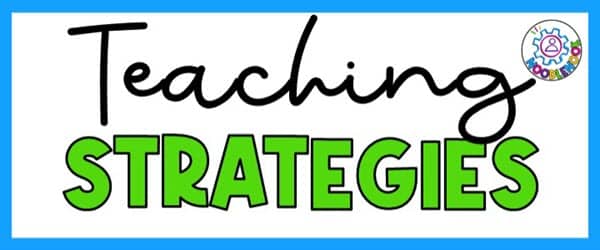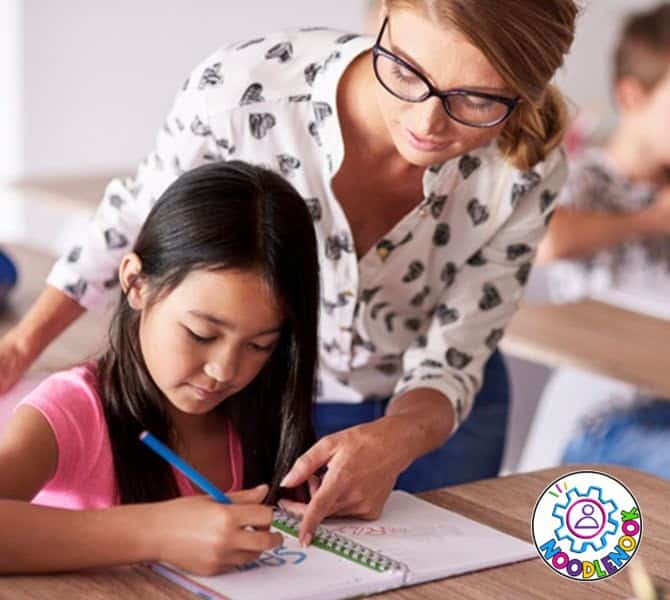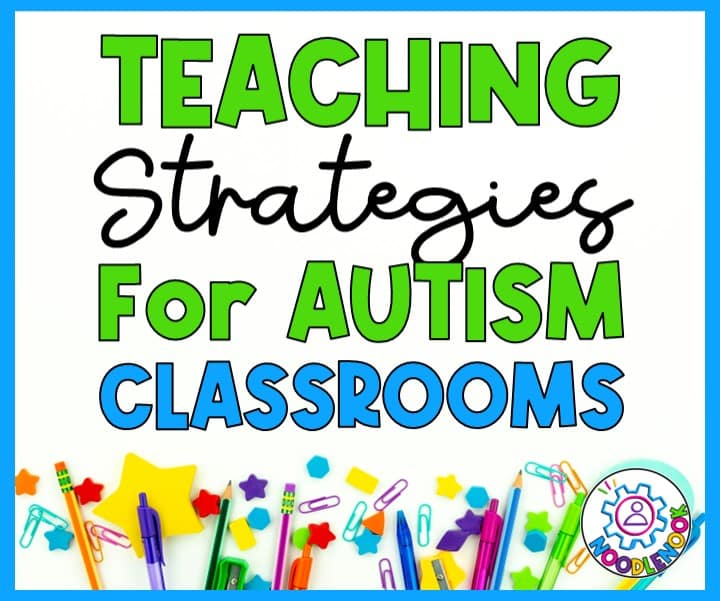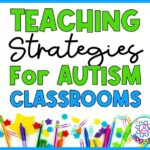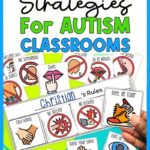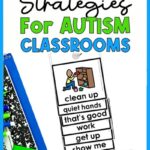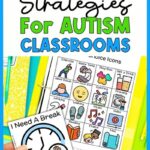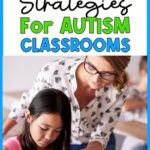I have been teaching for years. When I think back to my classrooms of yore, it seems like there were just way fewer students with autism back in the day. Now it seems like more and more students have an autism spectrum disorder. That means being a great teacher necessitates knowing what strategies will work best for them. In this blog post, I’ve got my top 10 tips and teaching strategies for autism classrooms. These tips are based on research, best practices, and decades of trial and error. I hope they help you create a positive and supportive learning environment for you and your students.
What is Autism?
Autism spectrum disorder (ASD) is a developmental disorder that affects how people communicate, interact, and behave.
Sometimes autistic people struggle with verbal instructions, loud noises, and social interactions, especially with nonverbal communication like body language. Sometimes we see challenges with fine motor skills, processing sensory information, and managing change. And sometimes autism includes focused special interests, easy sensory overload, or inappropriate behavior, especially in stressful situations.
There is no set of characteristics of autism. And there is no set IQ for individuals with autism. In other words, because a person has autism, it doesn’t mean they also have an intellectual disability. Autistic students have different strengths, challenges, and needs. Therefore, a special education teacher needs to use effective techniques and methods to help them learn and grow.
Tip 1: Use Visual Supports
Many autistic students are visual learners. They learn better when they see information rather than hear it. But let’s face it… most people learn better with visuals! Visual supports are tools that help us understand and remember what we need to do. Some examples of visual supports you should have in your classroom include:
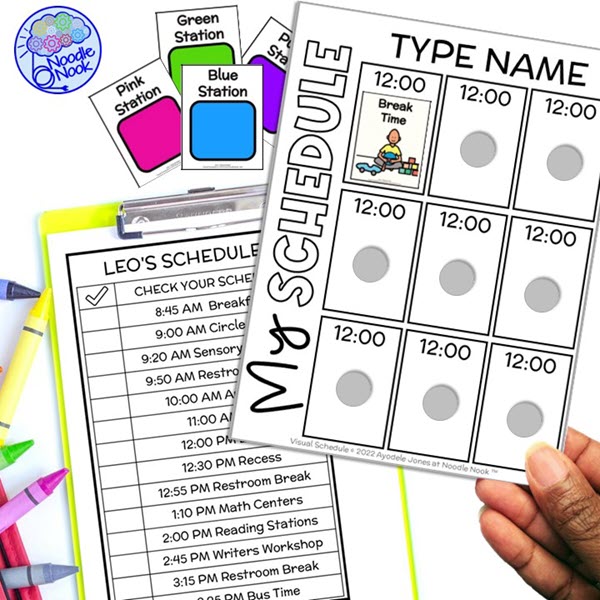
Visual Schedules
These are pictures or words that show the daily routine and activities in the classroom. They help autistic students know what to expect and what to do next. They also reduce anxiety and stress caused by unexpected changes. You absolutely need a visual daily schedule for younger children, but also for older children too. Visuals schedules help everyone (including you and your classroom aides)!
Visual Timers
These are devices that show how much time is left for an activity or a transition. They help autistic students manage their time and prepare for changes. They also reduce frustration and meltdowns caused by abrupt endings. If you’d like a FREE visual timer for your classroom, check out Classroom Screen. (And I’m not an affiliate, I just like great free teacher tools!)
Clearly, visuals are essential teaching strategies for autism teachers! So, think about how you can add and use visual supports in different ways and places in the classroom. For example, a picture schedule on the wall, a visual cue or rule card on the desk, and a visual timer on the board. And these visual supports can be for individual students or the whole class.
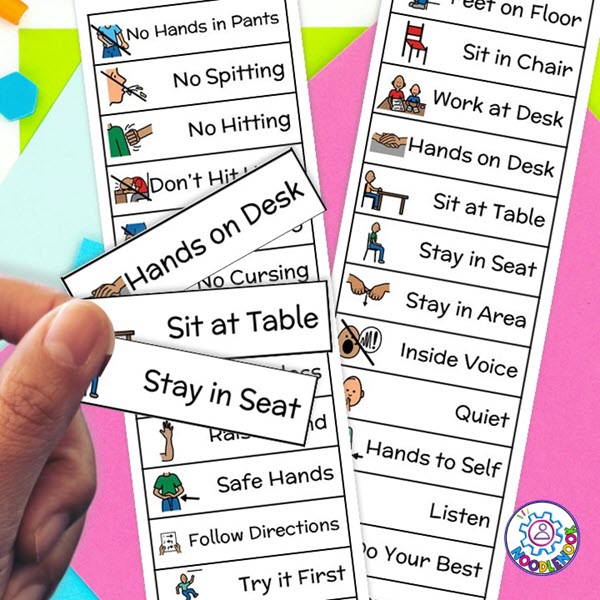
Visual Cues
These are signs or symbols that remind autistic students of the rules, expectations, and instructions in the classroom. They help them follow directions and stay on task. They also promote independence and self-regulation. Consider signals to use the restroom, to listen carefully, or to calm down. Even simple things like lowering the lights when it’s time to work quietly, or flashing the lights when a transition is coming can provide those visual cues.
Tip 2: Use Social Stories
I love a great social story… and you should too! Social stories are simple narratives that teach autistic children how to behave and interact in social situations. They describe what happens, why it happens, and how to respond. It is the best way to help students with autism understand the feelings, thoughts, and perspectives of others. They also help them learn appropriate social skills and cope with challenging situations. And, let’s be clear, we have a lot of students with and without disabilities who need help with social skills! That’s why social narratives are top teaching strategies for autism classrooms.
You can use social stories to prepare for new or difficult situations, such as going on a field trip, joining a group activity, or dealing with a conflict. You can also use social stories to reinforce positive behavior, such as sharing, taking turns, or saying sorry.
It is easy to create your own social stories. They should include pictures, words, or both to make them more engaging and accessible. Read more about social stories by reading this post (Social Stories for Kids with Autism), or check out a full classroom set with tons of stories in the Noodle Nook store. Plus, they work well with young children as well as teens!
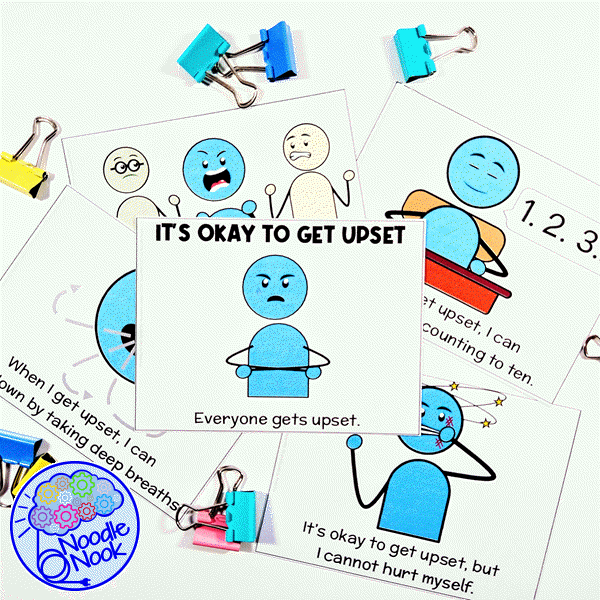
Tip 3: Use Positive Reinforcement
Positive reinforcement is a way of encouraging and rewarding students for doing something good. It helps them learn what is expected of them and motivates them to repeat the behavior. It also boosts their self-esteem and confidence.
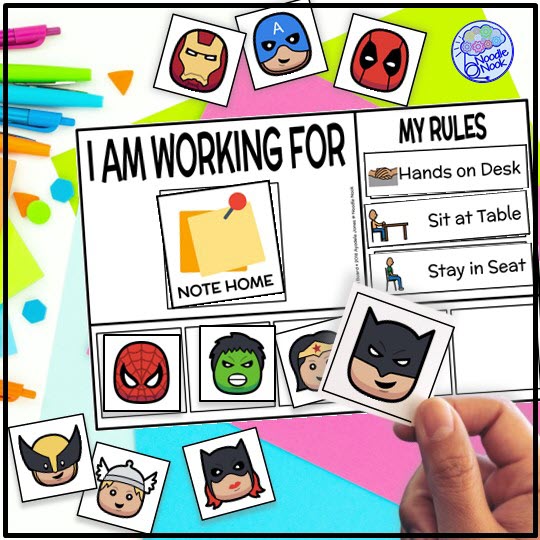
Positive reinforcement is a more effective way to change behavior long-term than consequences and punishment. That reinforcement can be verbal or non-verbal, tangible or intangible, immediate or delayed. Some examples of positive reinforcement are:
You can use positive reinforcement for academic, social, or behavioral achievements. For example, you can praise an autistic student for completing a task, give them a sticker for raising their hand, or let them choose a game for being polite. My preference is to use a token board for positive reinforcement with students who struggle with behavior and impulse control. I find them to be effective with all types of students and fun to use too! [Read More Here about Token Boards]
Use positive reinforcement for small improvements or part of a larger individual behavior plan. And remember to sprinkle positivity when you see behaviors you want to get more of! Compliment students for trying new things, give them a token for staying calm, or reward them with a high five for following a rule. Positive reinforcements are some of the top teaching strategies for autism classrooms!
Tip 4: Use Structured Teaching Strategies
Structured teaching is a way of organizing and presenting information and tasks to students that is clear and consistent. This uniformity in the learning environment helps students understand what they need to learn and do. It also reduces anxiety so they can focus and avoid distractions.
Structured teaching involves four elements:
You can use structured teaching strategies for autism students individually or as part of your whole class setup. Just adjust them according to the needs and abilities of your students. Using structured teaching strategies for autism classrooms can help you manage a larger class of individuals with disabilities.
Tip 5: Use Sensory Tools
Sensory tools are objects or activities that help students regulate their sensory input and output. They help them cope with sensory issues, such as sensitivity or seeking, that affect their learning and behavior. Remember, not every student is trying to avoid sensory input, nor is every student seeking sensory input. To be effective, you need to know your students.
Sensory tools can be calming or stimulating, depending on the needs and preferences of autistic individuals. Some examples of sensory tools are:
You can use sensory tools in different ways and times in the classroom. For example, you can use a weighted blanket to help a student relax during a break, a fidget spinner to help them focus during a lesson, or a stress ball to help them release tension during a test.
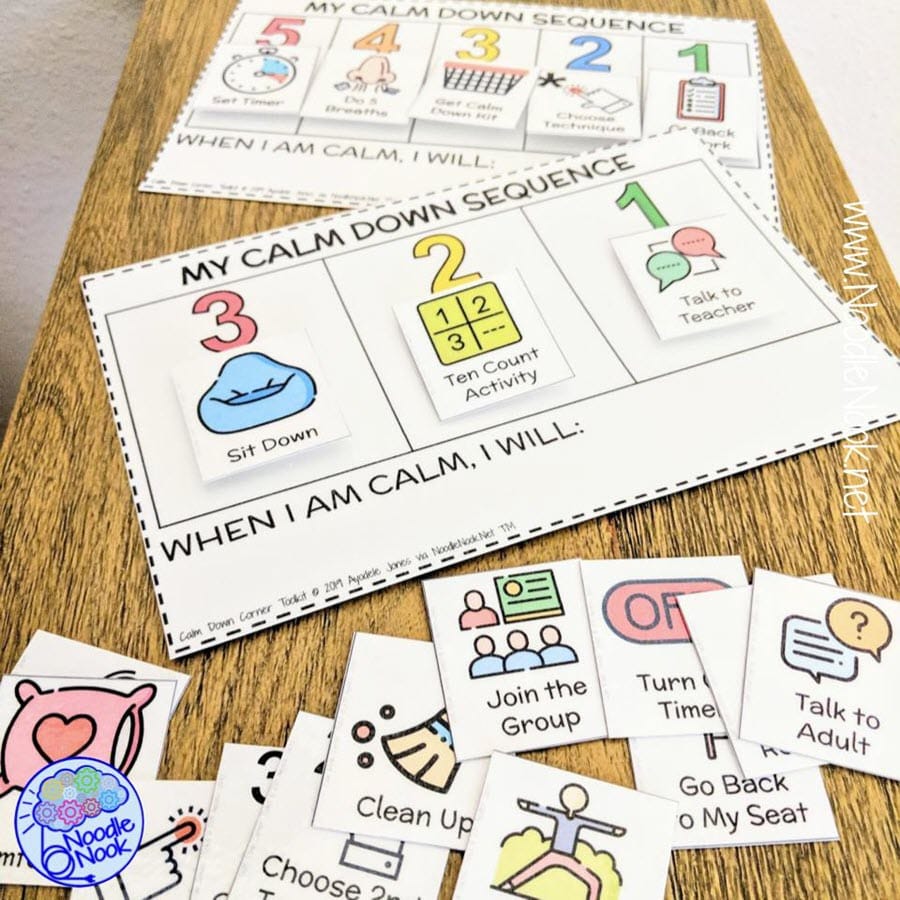
You can also use sensory tools as part of a sensory diet, which is a plan of sensory activities that help autistic students stay balanced and alert throughout the day. You can consult an occupational therapist to create a sensory diet for your students.
Some posts that can help you with this are How to Tire Out a Student with Autism, Best Stim Toys for Autism, and Why Do Autistic Kids Like Trains?
Tip 6: Use ABA-Based Interventions
ABA-based interventions are teaching methods that use the principles of applied behavior analysis (ABA) to teach autistic students new skills and behaviors. ABA is a scientific approach that studies how people learn and behave. It uses data, observation, and experimentation to identify the causes and effects of behavior. Now, I know there is some controversy surrounding ABA in the classroom. Before I get into that, ABA-based interventions involve three steps:
Using ABA…
Consider using ABA-based interventions for academic, social, or behavioral goals. For example, you can use discrete trial training to teach an autistic student how to read, use pivotal response training to teach them how to play, or use functional communication training to teach them how to ask for help.
Most of the contention about ABA is in the interventions. So, I will say this: don’t do to a student what you wouldn’t want done to your child or yourself. If it feels icky or uncomfortable, you may not be implementing the interventions correctly or you may want to choose another approach.
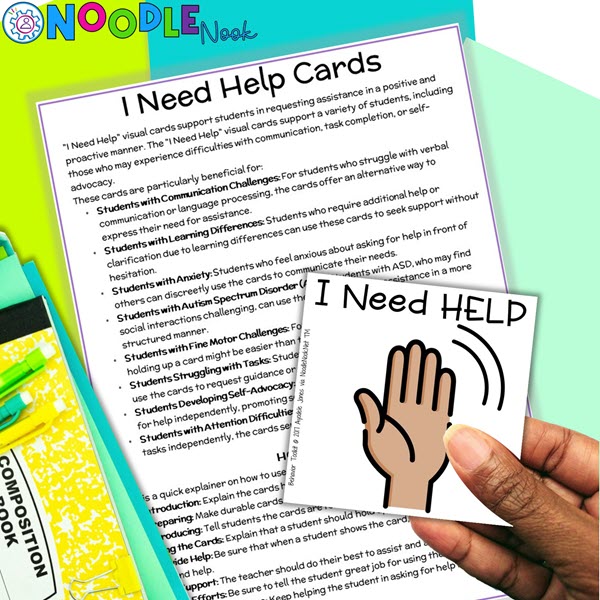
If you are struggling with ABA-based interventions for individual students or for small groups, consult a trained professional. However the process of assessment and generalization are solid and should be part of your top teaching strategies for autism classrooms.
Tip 7: Use Group Activities
Group activities are tasks or games that involve two or more students working or playing together. They help autistic students develop important skills, such as communication, cooperation, and problem-solving. They also help them build relationships and friendships with their peers.
You can use group activities in different subjects and curriculum areas. For example, you can use a science experiment, a math puzzle, or a history project to teach autistic students academic skills. You can also use a board game, a role play, or a sport to teach them social skills. [Get More Role-Playing Ideas HERE]
You can use group activities for different purposes and outcomes. For example, you can use a cooperative activity, where students work together to achieve a common goal. You can also use a competitive activity, where students compete against each other to win a prize. [Read More About Cooperative Learning in Life Skills Here]
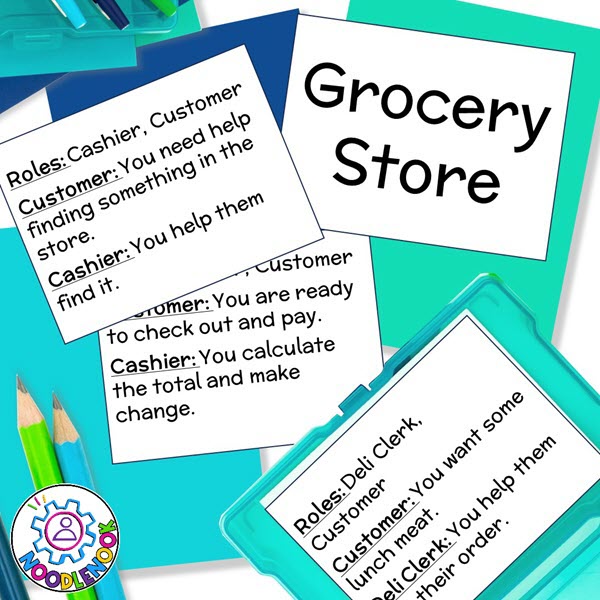
Here is the long and short of it: Students with disabilities, including autism, need practice with social skills, communication, and problem-solving. When we include more group activities in the classroom setting, and group students by different levels and abilities, they learn those functional skills. Make it easy and use a simple activity where students follow clear and easy instructions as a team. Or, if you’re feeling like an OG, use a complex activity where students use creativity and critical thinking as part of group work. Either way, it’s a win for functional learning.
Tip 8: Use Inclusive Classroom Practices
Inclusive classroom practices are ways of creating an educational environment that respects and values the diversity and uniqueness of all students. They help every student feel accepted and included in the school community. They also help them access and participate in the same learning opportunities as their peers. To target inclusion as one of your top teaching strategies for autism classrooms, consider these four parts:
Curriculum
This is what you teach and how you teach it. You should use a universal design for learning (UDL), which is a framework that provides multiple ways of presenting, engaging, and assessing the content. Definitely use differentiation when teaching students at multiple learning levels. This strategy adapts the content, process, product, and environment to meet the needs and interests of individual students.
I have a great course on differentiation available. Click here to see more!
Remember to follow the IEP and use allotted accommodations and modifications. Accommodations are changes that help students access the content without changing the learning goals. Modifications are changes that alter the learning goals to match the abilities of the students. Both may be mandated as part of a student’s specially designed instruction.
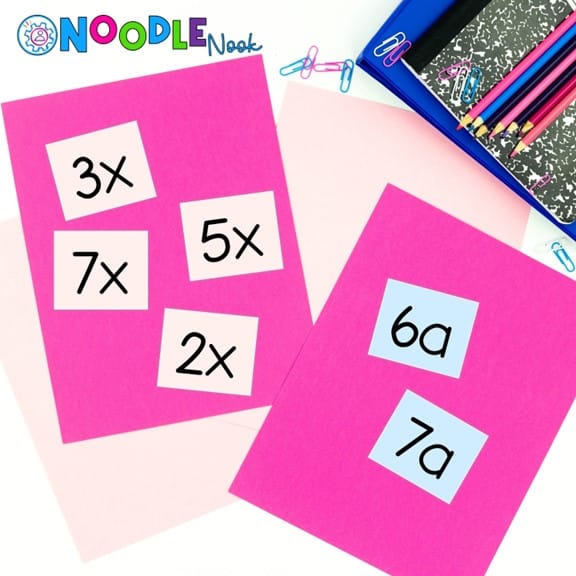
Instruction
This is how you deliver and facilitate the learning process. When you use a variety of strategies and methods, it better engages and supports all students. That means blending collaborative and cooperative learning. When special needs students work together, they can learn from each other. So consider peer tutoring, small group cohorts, and other instructional models that target essential skills development, like communication skills and social acumen.
Assessment
This is how you measure and evaluate the learning outcomes and progress of the students. Try to use multiple and flexible ways of assessing the knowledge and skills of the students. That includes formative and summative assessments, where you provide ongoing feedback and final grades to the students. For most students in special ed, you will use authentic and alternative assessments. That may include real-world tasks and projects or self and peer assessments.
Climate
This is how you create a classroom culture that fosters respect, trust, and belonging. When you teach autistic individuals, it’s important to be accepting of all students. Use positive and respectful language and behavior with and among the students. Implement positive behavior supports to manage behavior and motivation. Doing so will prevent and address behavioral issues with proactive and constructive approaches. And be sure to include specific and explicit instruction on social and emotional learning (SEL). Teaching and modeling skills like self-awareness, self-management, social awareness, relationship skills, and responsible decision-making will impact your overall climate.
When you implement inclusive classroom practices, all students (not just specific groups of students) can learn better. If you’re still in doubt, consult with other professionals, like school counselors, psychologists, or therapists. It takes a village, right?
Tip 9: Use Response Modes
Using response modes with all students means every child has a way to communicate. These communication strategies allow students to express themselves and show their understanding. When a student has a reliable response mode, it helps them communicate their needs, wants, feelings, and thoughts. It also makes it easier to assess them and allow them to show they comprehend the information and instructions in the classroom. Communication strategies involve two aspects:
Receptive communication:
This is how autistic students understand the messages from others. You should use simple and clear language, gestures, and cues to communicate with them. Consider assistive technology tools in addition to augmentative and alternative communication (AAC) systems. These AAC systems are methods that supplement or replace speech. Some examples of AAC are:
Choose what best supports each student’s communication skills and be sure to target acquisition as an early intervention. The earlier, the better!
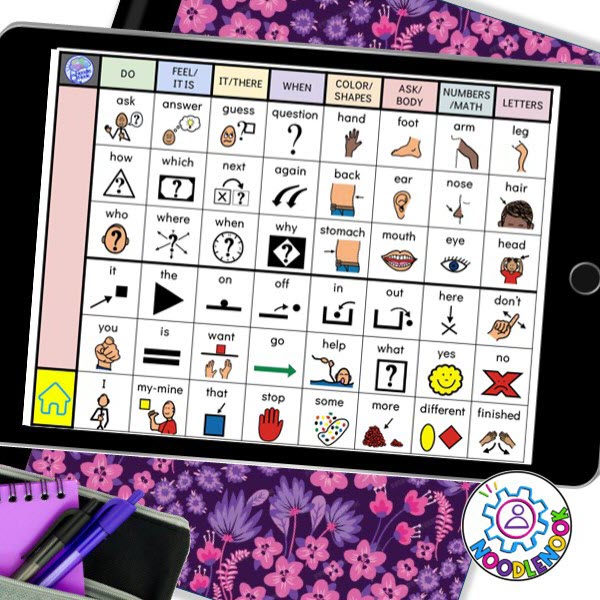
Expressive communication:
This is how autistic students convey their messages to others. As you work to help students use speech or SGDs more to communicate, implement the PEER techniques to enhance their communication:
You can use communication strategies for individual students or for the whole class. You can also adjust them according to the communication level and style of your students.
Tip 10: Use Individualized Education Plans (IEPs)
Individualized education plans (IEPs) are documents that describe the educational goals, services, and accommodations for autistic students. It’s like the blueprint for a student’s learning that lasts a year at a time. If you have ever read one, though, they are not always the shortest or easiest to access. That is why, in order to best follow a student’s plan, it helps to have an IEP-at-a-glance document. It’s like a student cheat sheet of best practices that you can share with providers for consistency of services.
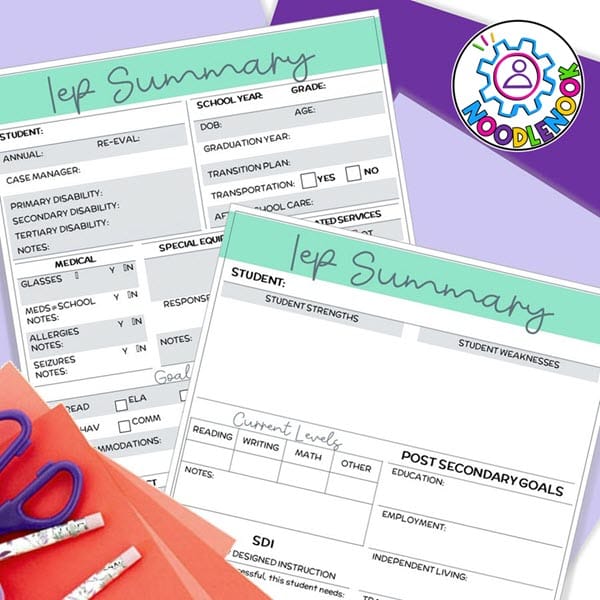
RECAP: Teaching Strategies for Autism
Teaching students with autism can be challenging, but also rewarding. By using the teaching strategies for autism in your classroom, it’s easy to help students achieve their academic, social, and behavioral goals. These strategies are based on research, best practices, and the experiences of special education teachers. They are also flexible and adaptable to the needs and abilities of each student… kinda like we have to be! If you implement all ten of these, your class will be more inclusive, your students more successful, and you’ll be a little more sane. Good Luck!

